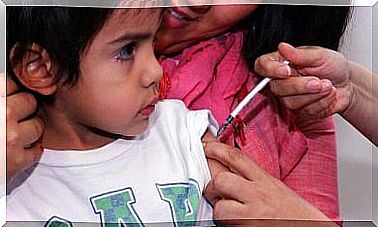Emotional Eating In Children And Adolescents

Throughout this article we will discover how to manage emotional eating and the factors that trigger it. But first, let’s define what it means.
What is emotional eating?
First of all, it is a concept that refers to consuming certain foods to manage emotions. Typically palatable and calorie-dense foods, such as sweets or salty snacks (chips, nuts, cheese, etc.). Therefore, it is considered an escape route to get momentary relief from anxiety, sadness, etc.
What is momentary is because, after having resorted to food, you continue to feel the same or feelings of guilt may appear. Research generally regards it as the reaction to negative feelings, even to eating a larger quantity of food. Despite everything, it is also attributed to happiness and even restricting intake.
Its appearance depends on the moment in which we are and our state of mind, although it mostly manifests itself in adolescence or from 40-50 years. In addition, it usually occurs, to a greater extent, in women due to the image of perfection or superwoman instilled by the society in which we live. However, it does not mean that men do not present it.
Likewise, we would like to emphasize that depending on the case and frequency, it can be considered as an eating disorder.
Development of emotional eating
Although some authors affirm that the genetic component contributes to its appearance, it is really a learned behavior. Therefore, the main causes are the family and social environment. Therefore, we deduce that childhood is the stage in which learning to eat and manage emotions is essential.

Think that it is an age in which this assimilation is achieved by imitation and observation. At first, by the parents and relatives with whom they live, and later by their friends and teachers at school or extracurricular activities.
So, we must monitor the behavior we show at the table in front of food or around the physical. Even how we express ourselves and resolve conflicts. Among the risk factors are:
- Perfectionism and frustration with mistakes.
- Negative criticism of any part of our body or of another person.
- Obsession for weight or how our clothes fit.
- Restriction or prohibition of food, either with the aim of weight loss or negative attribution. In short: dieting. This creates a desire to eat.
- Celebration of all achievements with food. Specifically, it would not pose any problem, since it is part of the own culture.
- Using food as a reward or to force someone to finish something we hate. Or encourage consumption with a material prize.
- Need to eat sweets or peck when we are tired, sad or have argued with someone.
Next, we are going to see the influence of the media on the messages related to this topic.
Advertising and emotions
Throughout history, canons of beauty have evolved. Since the 1990s, thinness has become an end, especially for girls and women. And this is where magazines, advertisers and modeling agencies have seized the opportunity to spread strict behavior and physical patterns or tips for losing weight or what to eat to burn fat.
Even low-fat and low-calorie foods are promoted whose consumption increases the risk of an alteration in eating behavior.
In addition, the ads are focused on the pleasure generated by food. For this reason, they use emotions as a sales strategy. Some very clear examples are that of the chocolate eggs in which a girl asks her father where joy comes from; chocolate bars or other similar products that claim to encourage imagination and fun; or the one with the pizzas.
In the latter case, there are several versions, such as the girl who has been left by the boyfriend and the father offers her a pizza to comfort her, or the mother who, after moving, proposes them for dinner and, thus, satisfies her. their daughters.
It is also seen in movies, especially American ones. Don’t you remember that scene on the couch or in the kitchen at dawn of a girl gobbling ice cream or surrounded by chips and cookies? The vast majority of times we are not aware, so we assume that it is something normal.
Stress, sadness, and anxiety or depression
As we have mentioned before, the intake can be by excess or deficiency. What makes you choose one or the other? Mood, situation, environment, past experiences, hormone or neurotransmitter levels.
On the one hand, stress is very common due to the economic situation and the interest of companies and entrepreneurs to increase productivity in record time and, consequently, obtain greater profits. But the reality is that we are not machines and it is impossible to comply with everything.
On the other hand, we place high expectations before everything and others, generating anxiety or depression by not being able to fulfill them. The best thing you can do is accept your limits by lowering the bar and learn from every moment, good or bad, and from mistakes.
In addition, it is worth mentioning the massive exposure to information and new technologies, highlighting social networks. As a consequence, feelings of sadness or frustration appear that it is necessary to know how to manage properly.

Practical tips to treat or prevent emotional eating
- First of all, observe yourself and assess how you feel, both in terms of food and your physical and mental health. You can discuss it with someone you trust. All followed, consider modifying your way of seeing and acting. If you find it complicated, ask a psychologist for help to provide you with the tools to manage it and become aware. It is never too late to go to therapy, even if it is for prevention.
- Eat in a pleasant environment, ideally without discussions and impositions or distractions. Why? First, you avoid tensions and, second, you practice mindful eating by being guided by your appetite and enjoying food to nourish yourself.
- Try to spend at least 15-20 minutes eating. How to do it? Leaving the fork on the table between each bite and chewing slowly.
- Value yourself and others for achievements and improvements. Avoid negative allusions about your physique. Thus, you promote self-esteem and self-confidence.
- If your goal is to lose weight or improve your body composition, make progressive changes. In this way, it will be easier to adhere and maintain them in the long term.
- Try to eat healthy and varied most of the time. From time to time, treat yourself to something you feel like eating, such as a piece of cake or pizza.
- Forget about prohibitions or lists of good and bad foods for something in particular.
- Express your emotions with someone you trust. In children, help them to recognize using books or films, like the setback ( Inside out ).
- If anxiety appears, try taking deep breaths to relax. It is difficult at first, but it is a matter of practice.
- If you have had a bad or very stressful day and you feel like a specific food, try to find a distraction such as exercising, going for a walk, calling a friend or talking to someone, etc.
Finally, remember to teach your children that food is a basic necessity to live that generates pleasure, and that expressing emotions is essential. And, above all, take into account the joint work between a psychologist and a dietitian-nutritionist or senior technician in dietetics to solve emotional eating.










